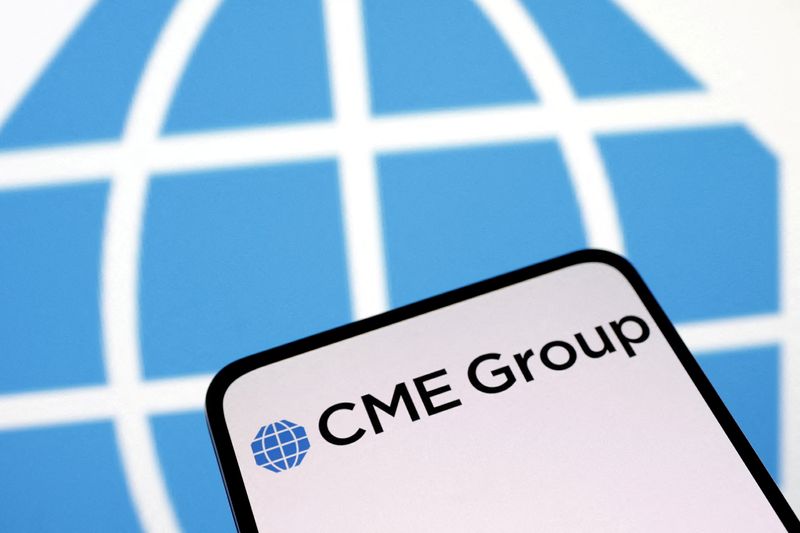By Tom Polansek and Julie Ingwersen
(Reuters) – CME Group (NASDAQ:CME) said on Wednesday it plans to launch spring wheat futures and options in the coming months that will compete directly with a historic Minneapolis market now owned by Miami International Holdings.
Traders expect CME, which dominates agricultural futures with benchmark grain and soy contracts, may steal trading volume for hard red spring wheat after its launch slated for early in the second quarter.
The owner of the Chicago Board of Trade already runs U.S. markets for two other types of wheat, soft red winter wheat and hard red winter wheat.
“Market participants will now be able to manage price risk across every major type of wheat on one exchange and all cleared in a single clearing house,” said John Ricci, CME’s global head of agricultural products.
Hard red spring wheat was historically traded at the Minneapolis Grain Exchange, or MGEX, which launched its signature contract in 1883 to trade the high-quality crop used to make bread and frozen dough products. It has the thinnest trading volume of the three U.S. wheat contracts.
Miami International Holdings last year renamed the Minneapolis market as MIAX Futures Exchange after buying MGEX in 2020.
MIAX plans to transition the trading and dissemination of market data for MGEX products from CME’s Globex platform to a platform it is building on June 30, spokesman Andy Nybo said.
MIAX is developing its own platform so it can launch new products without asking CME to add them to Globex, he added.
“We can control our own destiny,” Nybo said. Asked about CME’s launch, he said competition is healthy in markets.
“We’re in it to compete.”
MIAX said in September it entered a licensing agreement with Bloomberg Index Services and will list a number of equity index products.
But exiting Globex will cost it some wheat business.
Brian Hoops, president of broker Midwest Market Solutions, said he will shift to CME’s product.
“Taking it off of Globex, I think, is going to eliminate a lot of the volume from someone like me who’s doing brokerage work with clients that are growing spring wheat,” Hoops said.
“It’s kind of the end of the old Minneapolis Grain Exchange product.”
Commercial traders, such as flour mills and grain elevators, initially might favor the Miami exchange as the established marketplace, or use both trading platforms, said Frayne Olson, an agricultural economist with North Dakota State University. Ultimately, he said, speculative traders will determine which platform dominates.
“If you don’t have the trading volumes, the liquidity to get into and out of positions, the contract is going to fail,” Olson said. “And that is driven by the speculator.”

